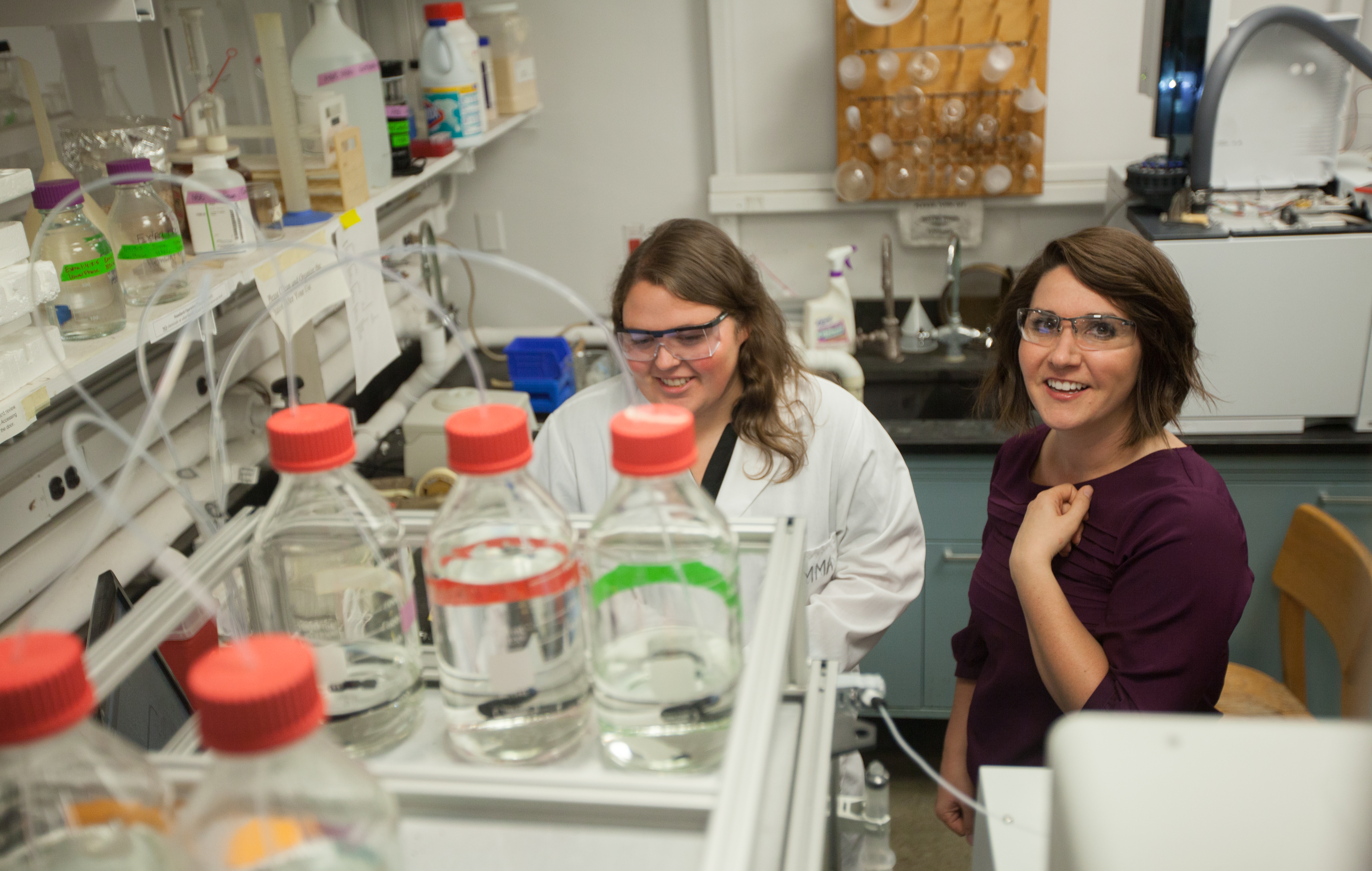Research
Imagine that you could obtain all of your worldly goods from renewable resources. From the toothbrush you used this morning, to the pill you take to keep your cholesterol in check. That is a broad aim of the bio-based economy. The goal of this research, however, is much narrower and will supply the research to boost the production of everyday
goods from the vegetation around us. Many commodity chemicals and pharmaceuticals are synthesized from petroleum based chemicals. This research will allow us to obtain these petroleum bases chemicals and compounds from natural and renewable sources instead. These bio-based alternatives are considered co-products since they will be obtained concurrently with the production of liquid transportation fuels from flora. The petroleum industry does not solely profit from the sale of gasoline, which means that the biorefinery will also require revenue than just the sale of ethanol. Agricultural biomass contains a variety of chemical building- blocks that can be removed and turned into a variety of everyday goods such as: plastics,solvents, adhesives, composites and fuel additives, to name a few. Research in value-added co-products aligns well with the “Grow it here, Make it here” policy proposed by U.S. Senator Stabenow as products from biomass can be used in many different facets of American based manufacturing and commodities production. Presently, government subsidies are necessary for the production of ethanol and other transportation fuels to be profitable.
The overall goal of the Engelberth Research Group is to identify and characterize additional products from the conversion of biomass into liquid fuels and to determine how much additional revenue the products will contribute to the biorefinery. To achieve this goal, the research is divided into three objectives.

- Identify new bioproducts or identify new sources from which to procure existing bioproducts.
- Develop methods to recover bioproducts. The product recovery will involve both an extraction and a purification step. The extraction step should align with current or proposed pretreatment methods and should not degrade the quality of the final product.
-
Create a simulation of the process model for the recovery and purification steps in order to effectively scale-up the process.
-
The process model will aid in the determination of how much it will:
- Cost to produce the product, both in energy and operations
- How much the product could sell for to either break even or to make a profit.
- This process model will help to determine the complimentary value of the additional products. The modeling portion of this research will add a key feature – determining the actual value of the additional product – that is currently missing in many biomass co-product studies.
-
The process model will aid in the determination of how much it will:
Videos of Student Research
Raymond RedCorn
Mahdieh Aghazadeh